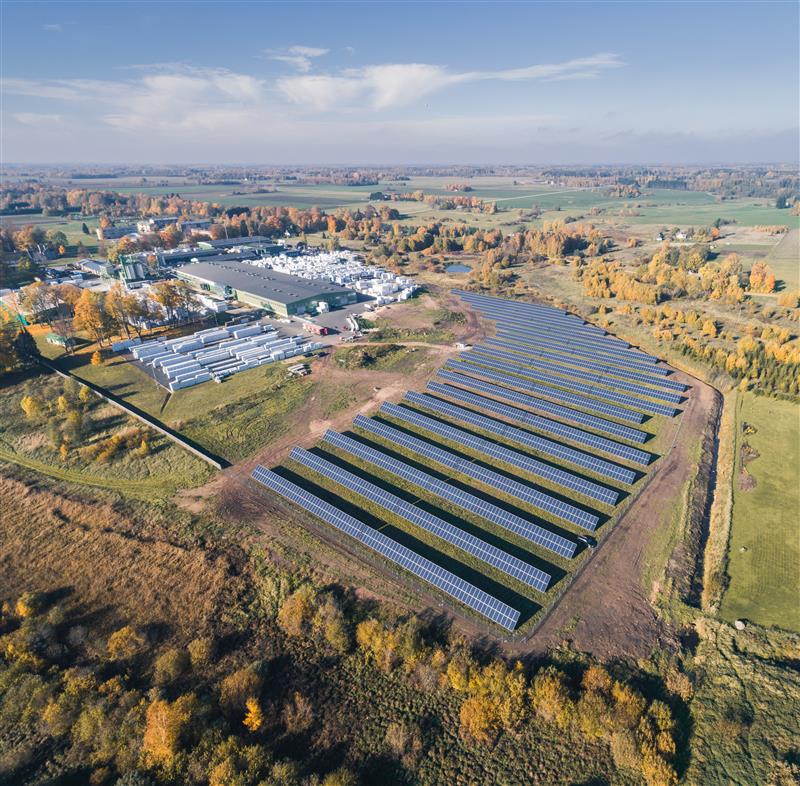The Renewable Energy Transition Has a Blind Spot. Here’s How SMA Is Solving It

Inverter Based Resources (IBRs) make up the majority of new generator interconnection applications, and with this shift comes the question “can the grid actually operate reliably when IBRs comprise the majority of the online generation at any given time?”
While the answer is a resounding “YES” it does have to be accompanied by a host of clarifications. Stable operation of our power system is only possible when there are mechanisms in place to address power system imbalances and possible contingency events. Those mechanisms are broadly referred to as Stability Services.
In a new video interview, Frank Berring, Head of Business Development for Large Scale at SMA America, explains what stability services are, why they are essential and how SMA is stepping up to deliver them through advanced inverter-based resources (IBRs).
What Are Stability Services?
Stability services refer to a set of crucial grid-support behaviors that traditional synchronous generators have historically provided. As Frank describes, a few of examples include:
- Fault ride through capability
- Inertia response to sudden changes in grid frequency
- Voltage containment
- Phase jump mitigation
As older conventional generators are phased out and IBRs become the dominant generation on the grid, these critical behaviors must remain in sufficient quantities, and in the right locations, or system failures will occur.
The good news is that IBRs like SMA’s large scale solutions are already capable of delivering these essential stability services today.
Why Should Developers and Stakeholders Care?
Grid stability affects every stakeholder involved in energy projects.
For system operators, maintaining stability is one of their primary responsibilities. For developers, grid stability directly impacts their ability to secure interconnection agreements. No stability means no project.
Frank emphasizes three key reasons developers should prioritize stability services:
- Grid Security and Resilience. There is no higher priority than the safe and stable operation of the network, which means we cannot further advance the energy transition without also considering Stability Services in our planning.
- Unlocking hosting capacity. Hosting capacity refers to the maximum amount of generation that can be connected to a specific part of the grid without requiring network upgrades or risking reliability problems. Stability services allow for more projects to connect to constrained grids, keeping project pipelines strong.
- Compliance with evolving standards. New interconnection standards subject interconnection applications to increasingly complex scrutiny, focused on stable operation under a variety of contingencies. Developers who integrate these considerations into their development processes from the beginning will mitigate their risks and realize more successful projects on accelerated timelines.
In a market that is already competitive, designing projects that help stabilize the grid instead of just feeding it will separate leaders from followers.
Designing for a Changing Market
One challenge Frank points out is that today, compensation mechanisms for stability services are not yet standardized across markets. Developers may need to integrate these behaviors upfront without immediate financial reward.
However, as grids continue to grow and the pressure for stability increases, markets will evolve. Incentives will follow. Forward-looking developers who invest in stability services now will be well positioned for success as new revenue models emerge.
SMA is not waiting for the market to catch up. The company is proactively working with system operators, regulatory bodies and industry groups to accelerate understanding and adoption of stability services.
International examples like the UK Pathfinder project show that market mechanisms can be successfully implemented to reward projects that provide critical stability behaviors. The recent blackout in Spain is juxtaposed as a warning of what lies ahead, if we do not.
SMA America is helping bring those lessons home to the United States.
Final Takeaway
The renewable energy transition is more than installing more megawatts of solar or storage. It is about building a future that is stable, resilient and capable of supporting the next century of clean energy demand.
Projects that deliver stability are not just good for business. They are essential for the long-term success of renewable energy itself.
With SMA’s technology and industry leadership, developers and grid operators can move forward with confidence, knowing they are helping secure the future of the grid as well as the future of the planet.

Feel free to contribute!